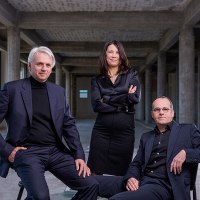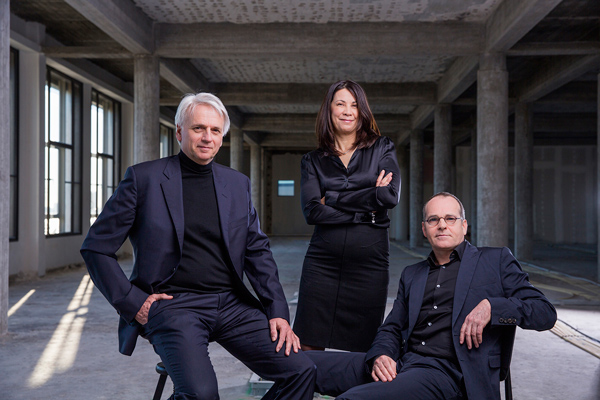The project consists in two separate buildings with different functions, one is larger and has a ceremonial character, and the other is smaller and contents the crematorium. Kaan Architecten have given an identity to each of the volumes through the use of different materials and spatial concepts with are suitable for every moment of the ceremony.
Description of the project by KAAN Architecten
The Heimolen cemetery in the city of Sint-Niklaas lies to the South of the E34 road, which runs from Antwerp to Gent. Tall trees and sloping banks enclose the cemetery on three sides, making the location hardly visible from the motorway.
The new facility of the crematorium in Sint-Niklaas (Belgium) has been developed as two separate buildings: a ceremonial, and a technical one (the crematorium proper). The decision to separate the two buildings was based primarily on practical and environmental considerations, but also on the will to give each of them a distinctive character and look deriving from their functions. Moreover this solution enables a spatial rite de passage within the site and the buildings, which is strictly related and suitable for the different stages of a funeral ceremony.
Emptiness, space and clarity predominate in the ceremonial building. The use of clear spatial gestures and different materials results in a space with a presence, where every element is carefully balanced. The large windows in the reception room offer a contemplative view of the cemetery and the landscape; the floor-to-ceiling doors give the space the necessary dramatic quality, and the perforation of the ceiling with round lights reinforces the solemn and pregnant atmosphere. Furthermore the use of natural stone and wood enables concentration and ease of thoughts.
The actual crematorium building owes its character to the façade composed of concrete cassette tiles, with a sprawl of sun light dots that show it as a beauty box without giving away its content. At the same time the floor-to-ceiling door and the sober choice of materials give shape to a proper set for the funeral, without being less contemporary.
In the ceremonial building, the floor and walls are made of light stone brickwork up to a height of 6 meters. The roof is about two meters thick and is plastered in the light stone color. And in the crematorium, the façade is clad with cream colored, prefabricated, profiled concrete elements measuring 1 x 1 meters. The three ovens are located in an area, which can be accessed by the bereaved. Both the steel cladding of the ovens and the floating floor are finished in high gloss white.
Text.- KAAN Architecten.
CREDITS. DATA SHEET.-
Architects.- KAAN Architecten.
Collaborators.- David Hess, Kees Kaan, Hannes Ochmann, Vincent Panhuysen, Dikkie Scipio, Luuk, Stoltenborg, Yaron Tam, Hagar Zur.
Landscape.- KAAN Architecten & Stadsbestuur Sint-Niklaas.
Structural Engineer.- Pieters Bouwtechniek, Delft.
Building Physics & Installations.- Bureau Bouwtechniek, Antwerp.
Acoustics.- Prinssen en Bus Raadgevende Ingenieurs, Uden.
Art.- Pieter Vermeersch, Christof Fink.
Client.- Intercommunale Westlede.
Main Contractor.- Roegiers, Kruibeke.
Program.- crematorium and ceremonial building.
Location.- Sint-Niklaas, Belgium.
Dates.- Design.- 2005. Completion.- 2008.
Area.- 3,187 sqm.
























































